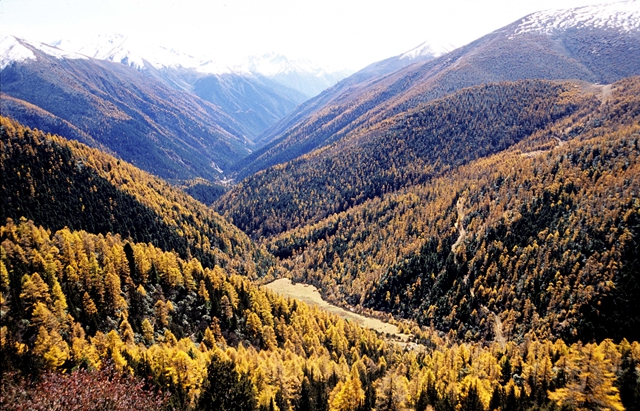Phylogeographic studies revealed that divergence and speciation of plants in the Hengduan-Qinghai-Tibet Plateau are closely related to the uplift of Himalayas and many plants on these regions colonized from other areas or are recently derived endemic species. It is of interest to understand whether these phylogeographic patterns correspond to the macro-evolutionary patterns of regional flora. Prof. Zhu Hua of Xishuangbanna Tropical Botanical Garden (XTBG) made intensive field investigations in Shangri-la region of southwestern China and consulted a large number of herbarium specimens. He aimed to analyze the floristic patterns and geographical elements of Shangri-la region and examine the origin and evolution of Shangri-la flora with the uplift of Himalayas. He further discussed the relationship between phylogeographic patterns and floristic evolution of the Hengduan Mountains. 6807 species of native seed plants from 1297 genera and 166 families were recognized. The flora of Shangri-la region is dominated by families and genera with cosmopolitan and north temperate distributions, while families and genera that are less species rich have diverse distributions, of which those with East Asian and Chinese endemic distributions are a minority. Among the species-rich families and genera of cosmopolitan and north temperate distributions, the regional endemic species contribute a conspicuously high percentage. The floristic patterns illustrate that the flora of Shangri-la could have evolved through rapid speciation mainly from families and genera of cosmopolitan and north temperate distributions, with the uplift of the Himalayas and climatic oscillations since the last glacial ages. The flora is obviously younger in evolutionary history than is usually supposed, and, therefore, not part of the age-old eastern Asian flora. The macroevolution of the flora in Shangri-la region is well corroborated by the phylogeographic implications of plant taxa in Hengduan-Qinghai-Tibet Plateau regions. Natural landscape of Shangri-la |

